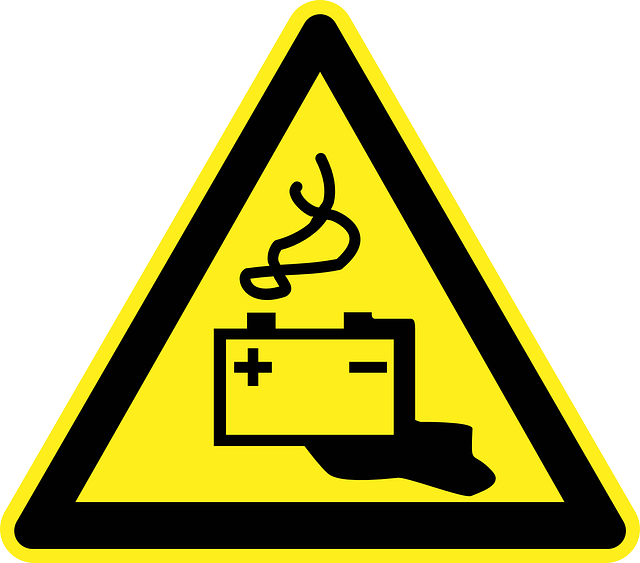When determining if it's time to replace your device's battery, it's crucial to disregard arbitrary timelines and instead focus on actual performance indicators. Modern lithium-ion batteries are designed for hundreds or thousands of charge cycles before significant capacity loss. Users should monitor their battery's duration and consistency in holding a charge, considering environmental factors like temperature that can affect longevity. It's also important to avoid fully depleting your battery daily, as maintaining a charge range between 20% and 80% typically extends its lifespan. Utilize data-driven tools or apps for accurate battery health monitoring to inform your decision on replacement, which can save costs, extend device functionality, and reduce environmental impact. Remember that battery recommendations from manufacturers are not always indicative of actual performance, so regular checks using diagnostic resources are key to knowing the right time to replace your battery. Additionally, consider the long-term cost-efficiency of high-quality batteries with longer lifespans, and ensure you dispose of old batteries responsibly. For those without the expertise or tools for a DIY replacement, professional services can guarantee a safe and effective battery swap, potentially including software updates that can enhance battery efficiency.
Navigating the intricacies of battery health and replacement can be a minefield of misinformation. With the ubiquity of devices powered by rechargeable batteries, it’s crucial to separate fact from fiction. This comprehensive guide, featuring expert insights, demystifies common myths surrounding battery replacements. From understanding when to actually replace your battery to evaluating true versus rated capacity, we’ll explore the nuances that affect your device’s performance and longevity. Additionally, we’ll examine cost-efficiency considerations, the impact of software updates on battery health, and the pros and cons of professional versus DIY battery replacement services. Replace battery decisions can significantly influence the efficiency and lifespan of your electronic devices; let’s uncover the truth together.
- Debunking the Myth: When to Actually Replace Your Battery
- Myth vs. Fact: The Role of Battery Wear in Performance Deterioration
- The Misconception of Battery Replacement Cycles
- Assessing Capacity: Understanding True Versus Rated Battery Life
- Cost-Efficiency Considerations Beyond Battery Replacements
- Software Updates and Their Impact on Battery Health
- Professional vs. DIY Battery Replacement: What's Best for Your Device?
Debunking the Myth: When to Actually Replace Your Battery

The decision to replace a battery is often fraught with misconceptions and outdated advice, leading many to either prematurely discard perfectly functional batteries or to continue using ones that have long since stopped performing optimally. One prevalent myth is that batteries should be replaced after a specific period, such as one year or two, regardless of usage. However, the actual trigger for battery replacement is not fixed by time but by performance indicators. For instance, most modern rechargeable batteries, like lithium-ion varieties, have a finite number of charge cycles they can endure before their capacity degrades significantly. These cycles are measured in hundreds or even thousands, meaning that under normal usage conditions, your battery may last for years beyond the arbitrary date many people set for replacement.
To determine if it’s time to replace your battery, monitor its performance by paying attention to how long it holds a charge and whether it can consistently deliver power as required by your devices. If you notice a marked decrease in run-time or an increase in charging frequency without a corresponding increase in usage, it may be an indication that your battery’s lifespan is nearing its end. It’s also important to consider the environment where the battery operates; extreme temperatures can accelerate battery degradation. By understanding these factors and focusing on actual performance rather than rigid timelines, you can make informed decisions about when to replace your battery, thereby extending its life and ensuring optimal device functionality.
Myth vs. Fact: The Role of Battery Wear in Performance Deterioration

Misconceptions about battery performance often lead to unnecessary replacements, with one prevalent myth suggesting that batteries should be replaced after a set number of charge cycles. However, the reality is more nuanced. Battery wear indeed contributes to performance deterioration over time, as repeated charging and discharging can lead to capacity loss due to chemical changes within the battery cells. Yet, it’s a myth that a fixed number of cycles is the sole indicator of a battery’s health.
The actual role of wear in performance deterioration depends on various factors, including the type of battery, how it’s used, and the conditions under which it operates. For instance, lithium-ion batteries typically last for hundreds or even thousands of cycles before significant capacity loss becomes noticeable. It’s also a myth that using up all the charge in a battery is harmful; modern batteries can safely operate at various states of charge, though it’s generally advisable to keep them between 20% and 80% for optimal longevity. Understanding these nuances is crucial when assessing whether to replace a battery, as replacing it too early could be both costly and environmentally unfriendly. To extend the life of your battery, consider using a battery management system that helps monitor its health and provides alerts based on actual performance data rather than relying on arbitrary cycle counts.
The Misconception of Battery Replacement Cycles

When the time comes to replace a battery, understanding the optimal replacement cycle is crucial for maintaining device performance and longevity. Contrary to a common misconception, batteries do not adhere to a strict “use until full capacity is reached” guideline. The lifespan of a battery is influenced by various factors including chemical composition, temperature extremes, charge patterns, and usage conditions. Manufacturers often specify a date when the battery should be replaced, which is typically after two years from purchase, but this date may not align with actual battery performance. It’s a misconception that all batteries follow the same replacement cycle; some may hold a charge longer or retain more capacity under different conditions. To accurately assess your device’s battery health and determine when to replace it, consider using tools or software provided by the manufacturer or third-party applications designed to analyze battery performance over time. These tools can provide data on battery health and capacity, helping users make informed decisions about battery replacements based on real-world usage rather than arbitrary timelines. Regularly replacing a battery when its capacity falls below an acceptable threshold, as indicated by these diagnostic tools, is the best approach to ensure optimal device performance and longevity.
Assessing Capacity: Understanding True Versus Rated Battery Life

When considering a battery replacement, understanding the distinction between true and rated battery life is crucial for making an informed decision. Manufacturers often quote rated battery life, which is the longest amount of time the battery can operate under ideal conditions, as per specific testing protocols. However, this figure doesn’t always reflect the actual performance you’ll experience in real-world scenarios. True battery capacity, on the other hand, takes into account various factors such as temperature, usage patterns, and battery age, which can significantly influence the battery’s longevity. To accurately assess your device’s battery capacity, it’s essential to consider real-time data from actual use rather than solely relying on the rated battery life. This ensures that you have a more realistic expectation of how long your device will run before needing a replace battery. Tools like battery stats usage apps can help monitor and analyze your power consumption habits, providing insights into which applications or functions are draining your battery most rapidly. By understanding these nuances, users can make better decisions when the time comes to replace their batteries, leading to more satisfactory and sustainable device performance.
Cost-Efficiency Considerations Beyond Battery Replacements

When contemplating a battery replacement for electronic devices, cost-efficiency extends beyond the immediate expense of the new battery. While replacing a battery may seem like a straightforward financial decision, long-term savings and environmental considerations should not be overlooked. For instance, investing in high-quality batteries with longer lifespans can lead to fewer replacements over time, offsetting the initial higher cost. Additionally, some devices offer energy-saving features or software updates that can extend battery life, thus delaying the need for a replacement. It’s crucial to weigh these factors when planning a budget for device maintenance. Furthermore, opting for professional services for battery replacements, as opposed to DIY kits, may come with guarantees and warranty extensions, potentially reducing future costs. Consider, too, the environmental impact of frequent battery replacements; responsible disposal and eco-friendly options can significantly reduce your carbon footprint. Thus, when replacing a battery, it’s not just about swapping out components but also about making a cost-conscious and sustainable decision that aligns with your device’s lifecycle and your financial planning.
Software Updates and Their Impact on Battery Health

Navigating the complexities of smartphone maintenance often leads users to consider a battery replacement when performance dips. However, before resorting to this solution, it’s crucial to understand the role that software updates play in battery health. Software updates are not merely add-ons; they can significantly affect how your device’s battery performs over time. These updates often include optimizations for battery efficiency, bug fixes that prevent unnecessary drain, and improvements to overall system performance. For instance, a software update might introduce more efficient algorithms for managing power consumption. As a result, users may notice their devices last longer between charges after an update, which can sometimes alleviate the need for an immediate battery replacement. Therefore, it’s advisable to ensure your device is up-to-date with the latest software before deciding to replace the battery. This proactive approach can save time and resources, ensuring your device operates at its peak for a longer period.
Professional vs. DIY Battery Replacement: What's Best for Your Device?

When the time comes to replace the battery in your device, a key decision you’ll face is whether to opt for professional service or to undertake the task yourself. While DIY battery replacement can be tempting due to its cost-effectiveness and the sense of accomplishment it may provide, it’s important to weigh this against the risks involved. Professional technicians are well-versed in the intricacies of various devices; they have the expertise to handle the delicate process of replacing a battery without causing damage to your device. This ensures that your electronic companion will not only receive a fresh battery but also undergo a thorough inspection for any other potential issues. On the flip side, attempting the replacement on your own requires careful attention to safety precautions and precise execution of steps. If done incorrectly, it could lead to malfunctioning or even pose a fire risk due to improper handling of lithium-ion cells. Therefore, unless you have a solid background in electronics and are well-equipped with the necessary tools and knowledge, entrusting your device to a professional might be the more prudent choice. They can not only replace the battery effectively but also provide additional services such as software updates or cleaning that may enhance your device’s performance.
When addressing the common misconceptions surrounding battery replacement, it becomes clear that maintaining a device’s performance often hinges on understanding its battery rather than blindly adhering to perceived schedules. This article has illuminated key insights from experts, challenging widespread myths and offering practical advice on how to assess and replace batteries effectively. From recognizing the signs of wear affecting performance to comprehending the true versus rated life of a battery, and considering cost-efficiency over time, readers now possess the knowledge to make informed decisions about their device’s maintenance. Additionally, the importance of software updates in preserving battery health has been underscored, as well as the choice between professional and DIY battery replacement methods. Armed with these expert insights, consumers can extend their devices’ longevity, reduce unnecessary expenses associated with premature replace battery cycles, and ensure optimal device functionality.
